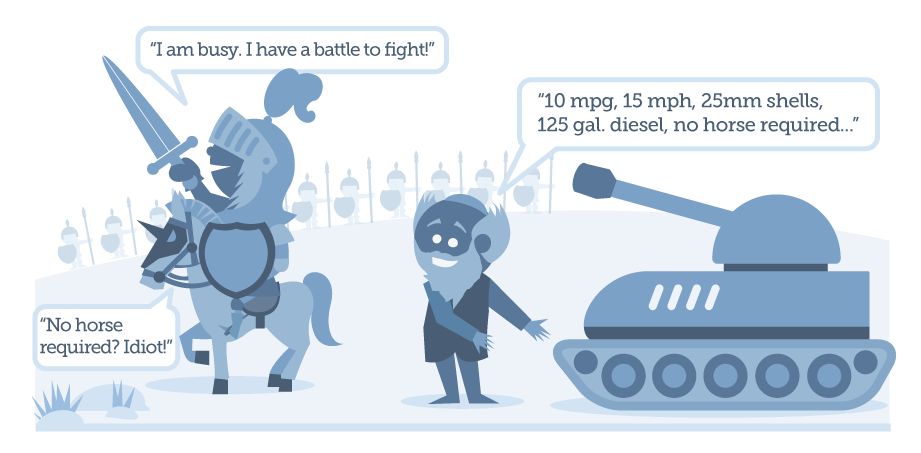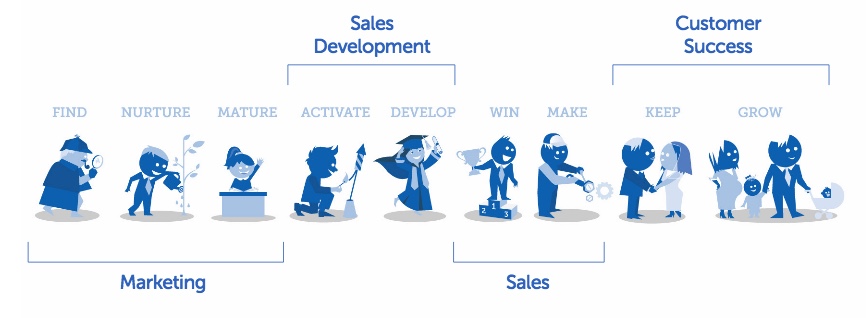You will have to continue to test, measure and test because the markets move all the time and what worked well yesterday may not work well tomorrow.
The other day I received this question from one of my readers:
Do you think that sending old fashioned “snail mail” might be a better method than cold calling or cold emailing for prospecting, especially in situations where I have a deep understanding of problems the prospect may be facing and can explain how our product helps? Of course, there is no guarantee they indeed have a problem at the time of my letter or a budget, but do you think this is worth trying?

The challenge with the question is that it leaves no clues as to what we want to achieve. Do we want to engage and close a transaction in the same call? Do we want to make an appointment to initiate a sales process or start building a relationship? I will make the assumption that we want to book an appointment and start a sales process (since a deep understanding of the customer’s situation apparently will be helpful for what happens next).
Before I answer the questions we need to have a common understanding of the term “cold call.” Looking up the term on Wikipedia gives us this definition:
“An unsolicited visit or telephone call made by someone trying to sell goods or services.”
Unsolicited means that we have no indication that the person we call on has any need for or interest in what we have to offer. It also means that the person didn’t ask us to call. Visit and telephone call means that we need to get in touch and talk to someone in person.
If we are selling something that does require a personal conversation with the potential customer very early in the sales process, then we can ask the following questions:
Q1: Will sending letters to potential customers give more appointments than making cold calls?
Probably not, but test it!
- Send out a thousand identical letters
- Have 10 salespeople make 100 cold calls each (to another 1,000 suspects)
- Compare the outcome
- Add up the expenses
- Calculate the appointment/expense ratio of each approach. The higher the number the better.
We know (Google “direct marketing response rates” and you will find numerous sources for industry data on the various direct marketing channels) that the average response rate on direct mails is 1-5% and that the average response rate on cold calls is 8-12%, but your situation may be different. Making cold calls is obviously much more expensive than sending out letters, so it is hard to say what your specific benchmark will show.
Note: The reason that we need to send 1.000 letters and have 10 sales reps perform this exercise in parallel is the need for enough data to achieve what we call statistical significance. Too few observations may lead us to the wrong conclusions. (Try flipping a coin 10 times. Note the result. Flip the coin 100 times. Note the result. We know that the chances of each side is 50/50, but with too few observations the average is most likely not 50/50).
Q2. Is calling cold more effective if I send a letter first?
Probably not, but test it!
- Send a thousand identical letters and make the same 10 sales reps follow up on those letters
- Compare with the results from exercise 1
The reason that I do not expect the “letter first” process to be more effective is the added cost of sending out letters on top of the cost of cold calls. Your specific situation may be different.
Q3. Is a traditional letter more effective than an email?
Probably not, but test it.
- Send out 1.000 emails with same message as the letter
- Have 10 sales reps follow up on 100 emails each
Response rates on emails are much lower than on physical letters, and there may be additional costs associated with finding the email addresses. I wouldn’t expect an email prior to a cold call to make much of a difference.
Q4. Should I stop making cold calls and rely on following up on inbound inquiries instead?
If we have to rely exclusively on cold calls because we never receive any inbound inquiries, then there must be a major flaw in our business model. I have written a separate post on this challenge. It is not impossible to build and grow a business based on outbound cold calling. I have seen it done successfully a couple of times, but I have seen it fail many more times.
The lean approach
I know that many sales (and marketing) organizations are unfamiliar with the approaches described above, but there are no other ways of finding out which approaches are the best for driving a marketing and sales process for a specific product/service in a specific market. If you want to try this approach I recommend you read “The Lean Startup” by Eric Ries, EVEN when you do not consider your company a startup. Eric Ries provides a good description of the lean approach and what we must do to constantly refine our approach without jumping to and making incorrect conclusions.

Marketing and sales are business processes just as R&D, financial management, manufacturing, logistics etc. The big difference is that the marketing and sales processes are extremely affected by the behavior of people external to us and over whom we have no control. Optimizing marketing and sales processes is required in all businesses and the only way is to test, measure, test, measure, test, measure and so on until you have a process that works and can be scaled. You will have to continue to test, measure and test because the markets move all the time and what worked well yesterday may not work well tomorrow.
